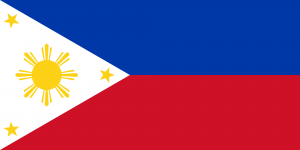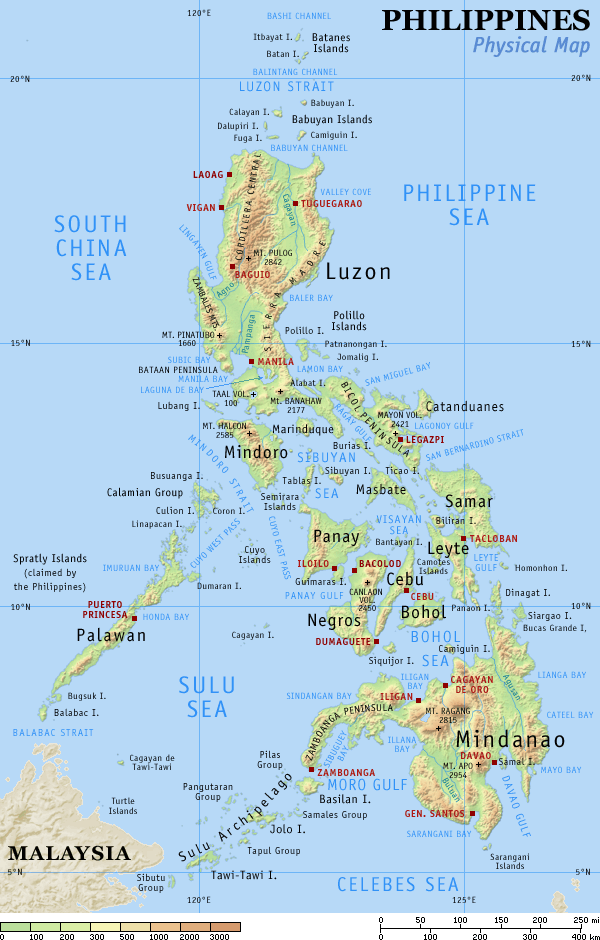
Philippines
National implementation of the ASEAN Agreement on Disaster Management and Emergency Response (AADMER)
Overview of the DRM System
Philippines has a Type E DRM System – Broad DRM focus, with permanent DRM system, but gives DRR an especially high priority. Aims to establish a whole-of-society approach to disaster risk governance, using the DRM system as the main vehicle. Has a high degree of detail and a broad DRR mandate for the DRM institutions, across sectors, with sub-national governments, civil society and the private sector. Most of these laws post-date the 2005 HFA and Indian Ocean Tsunami, and tend to be found in medium and high exposure countries that have not had a long tradition of risk governance through sectoral laws and local government. Hence, when seeking a major shift towards risk reduction, the DRM system is used as the main vehicle for awareness-raising and implementing change.
Legal framework
The Philippine National Disaster Risk Reduction and Management Act 2010 establishes a complex and multi-level disaster risk management system. The law has been under a scheduled review since 2015.
Key national institutions
The Act establishes the National Disaster Risk Reduction and Management Council (NDRRMC) as the peak policy-making, coordination, integration, supervision, monitoring and evaluation body.
The Office of Civil Defense (OCD) is tasked with administering the national civil defense and disaster risk reduction and management program, including supporting sub-national councils.
Sub-national structures
The DRRM Act provides for:
-
Regional Disaster Risk Reduction and Management Councils (RDRRMCs).
-
Local Disaster Risk Reduction and Management Councils (LDRRCs). LDRRCSs include provincial, city, municipal and Barangay local councils (although many Barangays do not yet have functioning councils). These are supported by the Local Disaster Risk Reduction and Management Offices (LDRRMOs) that the ODC’s parallel administrative structures at sub-national level.
Funding and budget
The budget for DRRM is regulated by the DRRM Law and General Appropriations Act (GAA). The national budget for DRRM is appropriated under the GAA, and is known as the National DRRM (NDRRM) Fund. Of the amount appropriated for the NDRRM Fund, 30 percent is allocated as Quick Response Fund (QRF) as a stand-by fund for relief and recovery and the remaining 70% can be used for broader DRRM activities.
Additionally, the DRRM Law mandates local governments to establish Local DRRM Funds by setting aside 5 percent of their estimated revenue from regular sources as the LDRRM Fund to support DRRM activities such as preparedness programs including training and purchase of rescue equipment, but also for response activities.
The LDRRM Fund can also be explicitly used for the payment of premiums on calamity insurance. Of the 5 percent lump sum allocation, 30 percent is automatically allocated as Quick Response Fund (QRF) which serves as a stand-by fund for relief and recovery programs. The rest of the 70 percent can be used for pre-disaster measures.
Integration of the AADMER and AHA Centre
The AHA Centre National Focal Point is the NDRRMC and the Administrator, Office of Civil Defense.
Provision on international and regional assistance
Under the mandates in the DRRM Act 2010 S.6 the NDRRMC mandate includes: “(q) Coordinate or oversee the implementation of the country’s obligations with disaster management treaties to which it is a party and see to it that the country’s disaster management treaty obligations be incorporated in its disaster risk reduction and management frameworks, policies, plans, programs and projects.” s.9 the OCD mandate includes: “(j) Ensure that all disaster risk reduction programs, projects and activities requiring regional and international support shall be in accordance with duly established national policies and aligned with international agreements;” The DRRM includes “Mechanism for International Humanitarian Assistance” (s.18): (a) importation and donation of food, clothing, medicine and equipment for relief and recovery and other disaster management and recovery-related supplies is hereby authorized in accordance with Section 105 of the Tariff and Customs Code of the Philippines, as amended, and the prevailing provisions of the General Appropriations Act covering national internal revenue taxes and import duties of national and local government agencies; and (b) Importations and donations under this section shall be considered as importation by and/or donation to the NDRRMC, subject to the approval of the Office of the President. (Note: Tariff and Customs Code of the Philippines s.105 relates to “conditionally-free imports”)

Laws, policies, plans and other resources
Laws, policies and plans
1978 Presidential Decree on Strengthening the Philippines Disaster Control, Capability and Establishing the National Program on Community Disaster Preparedness
2006 Disaster Risk Management Act (replaced)
2010 Disaster Risk Reduction and Management Act
2010 Implementing Guidelines on the Disaster Risk Reduction and Management Act of 2010
2011 National DRRM Plan 2011-2028
2011 NDRRMC Memorandum, One Stop Shop (OSS) (13 S 2011)
2012 Memo on Implementing Guidelines on the Use of Incident Command System (NDRM)
2014 National Disaster Response Plan Hydro-Meteorological Hazards
2014 NDRRMC Memorandum, Institutionalization of the Pre-disaster risk assessment
2015 Bill for an International Disaster Relief and Initial Recovery Assistance Act (under review)
2015 Philippine Atmospheric Geophysical and Astronomical Services Administration Act
2015 Children’s Emergency Relief and Protection Act
2015 OCD Operational Manual for Response
2015 National Disaster Preparedness Plan 2015-2018 Vol 1
2016 National Disaster Response Plan,Consequence Management for Terrorism-related Incidents
2017 Policy Brief Examining the Disaster Risk Reduction and Management System
National reports
2005 National Report for World Conference on Disaster Reduction
2009 National Report on Implementation of the Hyogo Framework for Action
2011 National Report on Implementation of the Hyogo Framework for Action
2015 National Report on Implementation of the Hyogo Framework for Action
Reports and other sources
2011 HI/ASB Mainstreaming Disability into Disaster Risk Management Initiatives in Indonesia and Philippines
2012 IFRC Philippines DRR Law Desk Survey
2014 CFE Advances in Civil-Military Coordination in Catastrophes – How the Philippines Turned Lessons Learned from Super Typhoon Haiyan (Yolanda) into Best Practices for Disaster Preparedness and Response
2014 OCD (presentation) Philippines State of Disaster Preparedness and Implementation of DRRM
2015 CFE Disaster Management Reference Handbook Philippines
2016 PRC HLP Roundtable on Housing, Land and Property Regulatory Barriers to Shelter and Settlements in Disaster-Affected Communities
![]()

